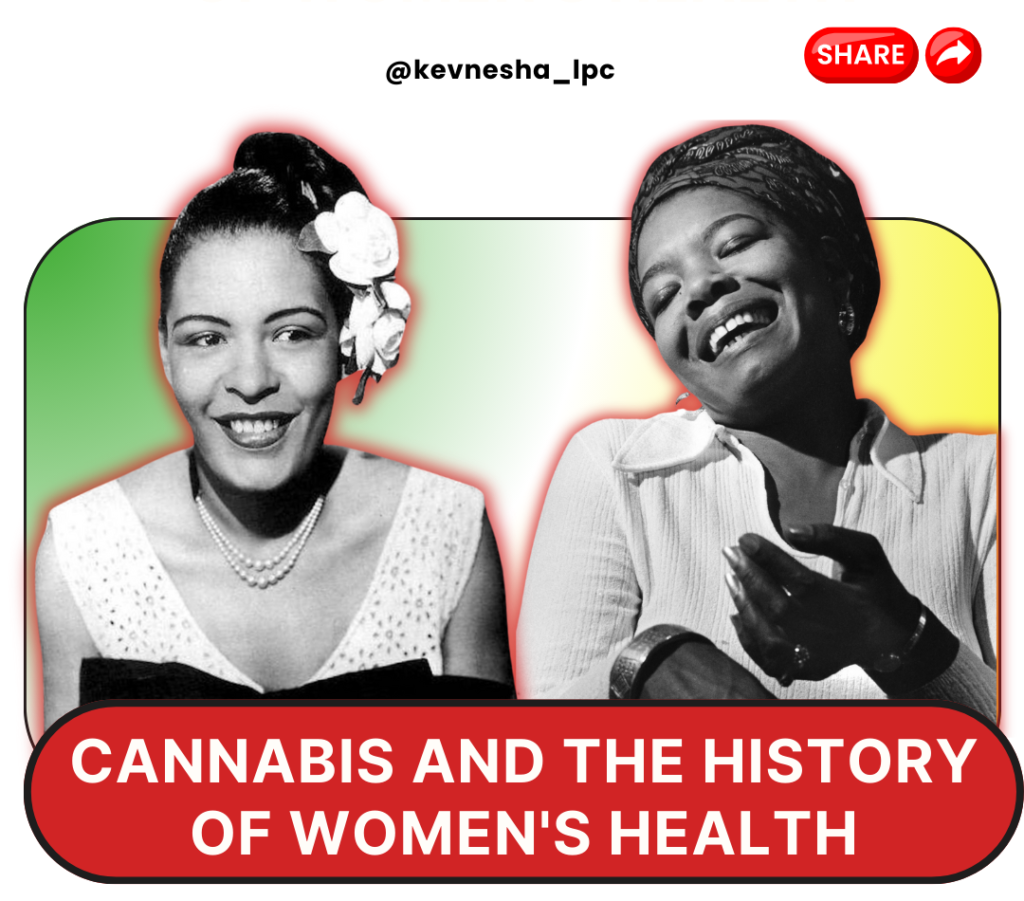
The intertwining of cannabis with women’s health spans centuries, offering a fascinating glimpse into the natural world’s role in healing and empowerment. In this exploration, we’ll revisit the stories of influential women, the specific health conditions that disproportionately affect women, and the ways cannabis provides relief and balance.
Influential Women and Their Connection with Cannabis
1. Maya Angelou: Renowned poet and civil rights activist Maya Angelou candidly shared her experiences with cannabis in her writings. She found that cannabis helped her savor food more profoundly and enhanced her sense of joy and laughter. Angelou’s story reflects cannabis’s ability to enrich life’s simple pleasures and highlights its role in elevating mood and enhancing sensory experiences.
2. Egyptian Wisdom and Ancient Use: Tracing back to ancient Egypt, cannabis was more than a psychoactive plant; it was a medicinal ally. The Ebers Papyrus, dating to 1550 BCE, includes references to cannabis, suggesting its use in treating gynecological conditions and easing childbirth.
3. Billie Holiday and Emotional Resilience: The legendary jazz singer Billie Holiday turned to cannabis amidst the trials of her life, including battling systemic racism and navigating tumultuous relationships. Her use of cannabis offers insight into its role in providing emotional solace and coping with life’s stresses.
Cannabis in Addressing Women’s Health Issues
1. PTSD: Women are more likely to experience Post-Traumatic Stress Disorder, often stemming from personal trauma. Cannabis has shown potential in easing PTSD symptoms, such as anxiety and recurring flashbacks, by influencing the endocannabinoid system, which regulates mood and fear.
2. Menstrual Discomfort: Cannabis has a longstanding history of being used to mitigate menstrual pain. Its analgesic and anti-inflammatory properties make it a viable option for women seeking relief from menstrual cramps and related discomfort.
3. Anxiety Disorders: Women are disproportionately affected by anxiety disorders. CBD, a compound in cannabis, is known for its anxiolytic properties, providing a sense of calm and relief without the psychoactive effects associated with THC.
4. Eating Disorders: Cannabis can play a role in addressing eating disorders, prevalent among women. Its ability to stimulate appetite and possibly improve body image perception can be beneficial in recovery.
5. Heart Disease: Often misconceived as a predominantly male issue, heart disease is a leading cause of death in women. Cannabis’s potential cardiovascular benefits, like reducing inflammation and blood pressure, warrant consideration, although its use in heart health is complex and should be approached cautiously.
Maximizing Cannabis’s Therapeutic Potential
The key to unlocking cannabis’s therapeutic potential in women’s health lies in understanding the interplay between cannabinoids and the endocannabinoid system. This interaction is central to managing pain, regulating mood, and maintaining balance within the body. However, personalized education and informed consultation are imperative. The type of cannabis, its dosage, and consumption methods should be tailored to individual needs and health profiles to ensure safety and effectiveness.
Conclusion
The story of cannabis in women’s health is a rich and intricate one, marked by the experiences of figures like Maya Angelou and the ancient wisdom of civilizations like Egypt. As we continue to unravel the mysteries of this plant, it’s crucial to approach its use with knowledge, respect for its history, and a commitment to responsible use. By doing so, cannabis remains a valuable and empowering tool in the journey towards women’s health and wellbeing.




